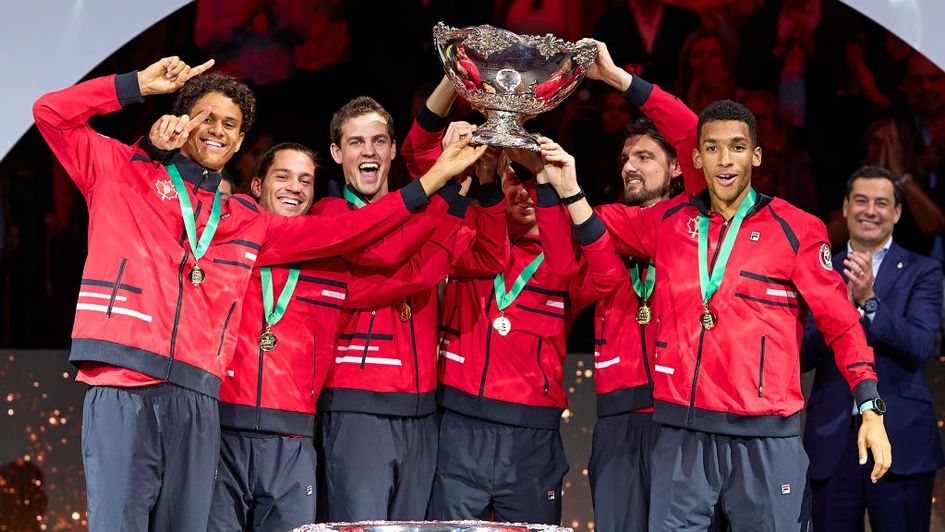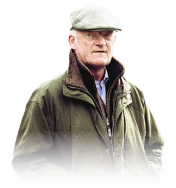For the uninitiated, let’s take a look at the format of this year’s Davis Cup.
Sixteen teams have come through the qualifying stage and this week (Tuesday to Sunday) they will compete in four groups of four, each group being staged in a different European city.
The top two in each pool will progress to November’s knockout stage, which is being held in Malaga, Spain.
Each tie is made up of two singles matches followed by the potentially decisive doubles.
It’s basically the same format as last season, which saw Canada emerge as champions. They had begun the group stage as 33/1 outsiders – and they were tipped up on these pages!
There is one change worth noting, though.
While last year the same Greenset surface was used at all four venues, this time around there are two different surfaces involved, albeit all four cities are using indoor arenas.
Bologna and Valencia will use Greenset again – a surface which played slow in 2022 – while Manchester and Split have Rebound Ace installed. I’d expect that to play a little faster.
Any way, time to take a look at those groups – and the teams within them – in more detail.
GROUP A (Bologna, ITA - Greenset)
Canada
Denis Shapovalov
Vasek Pospisil
Gabriel Diallo
Alexis Galarneau
The holders are back to defend their crown but their chances don’t look great. They are without their number one player, Felix Auger-Aliassime, and expected singles options Shapovalov and Pospisil have both had poor seasons. The good news is that they have landed in a weak-looking group. If they scramble through, things could look a lot more healthy in their team come November’s knockout stage – as was the case last season when it all came good.
Italy
Lorenzo Musetti
Lorenzo Sonego
Simone Bolelli
Andrea Vavassori
Matteo Arnaldi
This time last week, Italy looked competition favourites. Since then they’ve lost both Jannik Sinner and Matteo Berrettini from their team, while Fabio Fognini has also been dropped, breaking up a decent doubles partnership with Bolelli. Still, Musetti and Sonego are both top-40 players – Sonego will be one of the strongest in the number two position – and you’d still expect Italy to finish in the top two of this pool, especially with the home support. If they do, this team could look a lot stronger in November.
Sweden
Elias Ymer
Karl Friberg
Leo Borg
Filip Bergevi
Andre Goransson
Sweden have a rich Davis Cup history, the appearance of Bjorn Borg’s son Leo a nod to that. However, this year they look the group whipping boys. They have no top-150 ranked player in singles and only one – Goransson – in doubles. It’s hard to see them being competitive here – expect them to go 0-3.
Chile
Nicolas Jarry
Cristian Garin
Alejandro Tabilo
Marcelo Tomas Barrios Vera
Gonzalo Lama
Like most South American countries, Chile would prefer to be playing on clay but they are not without hope here. Jarry has enjoyed a good season on all surfaces, while Garin beat Casper Ruud on a slow hardcourt in Indian Wells. Expect them to be competing with the Canadians for second spot.
Group verdict
Italy have less room for error following the injuries to their team but those who remain still look capable of winning this group. Canada and Chile look set to battle it out for second place, with the holders maybe holding a slight advantage on the hardcourt surface. It’s hard to see Sweden doing much.
GROUP B (Manchester, GBR – Rebound Ace)
Australia
Alex de Minaur
Jordan Thompson
Max Purcell
Thanasi Kokkinakis
Matt Ebden
Australia don’t look likely winners of the Davis Cup but their team has plenty of depth and they should make life difficult for their opponents in Group B. If it’s fairly slow again, De Minaur should be at home – he won for this column at 40/1 in Acapulco this season – while Purcell showed good signs in North America recently. He also plays doubles regularly with Thompson. Expect the Aussies to be hard to beat in Manchester.
Great Britain
Cam Norrie
Dan Evans
Andy Murray
Jack Draper
Neal Skupski
GB have home advantage and strength in depth. The problem for captain Leon Smith is how much he relies on form. Neither Norrie or Murray has much of it so, on form, he’d pick Evans and Draper. Evans is also being touted as a doubles partner for Skupski though – can he do both? GB didn’t find the answers in a similarly tough group last year in Glasgow. While they should have enough to progress, a repeat wouldn’t be a huge surprise.
France
Adrian Mannarino
Ugo Humbert
Arthur Fils
Edouard Roger-Vasselin
Nicolas Mahut
With no Gael Monfils or Richard Gasquet in his team, captain Sebastien Grosjean has gone with a blend of youth and experience. Whether rising star Fils claims a singles spot remains to be seen but he’s certainly a contender. Roger-Vasselin and Mahut have bags of Davis Cup experience to draw on in doubles, so if France can take ties to the deciding rubber, they’ll have a decent chance.
Switzerland
Stan Wawrinka
Marc-Andrea Huesler
Dominic Stricker
Leandro Riedi
Alexander Ritschard
Wawrinka and Stricker both enjoyed good US Open runs and have the power to cut through the court if indeed it plays sluggish. Huesler provides back-up but the Swiss look a little light when it comes to doubles – and those rubbers could be crucial in what promises to be a hard-fought group.
Group verdict
This looks the toughest group to call. The hosts probably warrant favouritism but they disappointed at the same stage last season when also on home soil. The Swiss may fall on the doubles side but I really wouldn’t surprised to see any combination of these teams progress. Whether they can compete to win the trophy is another matter.
GROUP C (Valencia, SPA - Greenset)
Spain
Alejandro Davidovich Fokina
Roberto Bautista Agut
Albert Ramos-Vinolas
Marcel Granollers
Bernabe Zapata Miralles
Spain might be able to field Carlos Alcaraz and Rafael Nadal on home soil in November’s knockout stage, which would make them formidable foes, but neither is here this week. A lot now rests on Davidovich Fokina (good form) and Bautista Agut (less so). They should be able to drag Spain through in Valencia but it’s not guaranteed.
Serbia
Novak Djokovic
Laslo Djere
Miomir Kecmanovic
Dusan Lajovic
Nikola Cacic
US Open champion Djokovic is due to arrive midweek (after Serbia’s opening clash with Korea). As long as that happens, Serbia will have four players in the singles top 60 on their team. Djere played well to scare Djokovic in New York so should arrive with confidence high, while Kecmanovic and Lajovic wait in the wings. The Serbs are a passionate bunch who will give their all to win this trophy and they look likely to make the top two here.
Czechia
Jiri Lehecka
Tomas Machac
Jakub Mensik
Adam Pavlasek
The Czechs will likely relish their role as underdogs – and they while they are up against it in this group, they still hold a chance. Lehecka likes the indoor hardcourts, while Machac showed that too at this event in 2021 and he now holds a 4-1 singles record in Davis Cup. Teenager Mensik impressed by reaching the third round of the US Open as a qualifier and he’ll need more wins this week for his team to push on of the Big Two in this pool out of the qualification picture.
Korea
Soonwoo Kwon
Seongchan Hong
Yun Seong Chung
Jisung Nam
Minkyu Song
It’s hard to see Korea impacting this group much. Kwon is their only player in the top 200 for singles, while the Asians have no top-100 player in either format. They look out of their depth in the number two position and likely to struggle in doubles too. An early exit beckons.
Group verdict
Spain and Serbia should qualify but may have a nervous moment or too. The Czechs will aim to pounce on any weakness but Korea look a fish out of water here and are the likely basement boys.
GROUP D (Split, CRO - Rebound Ace)
Croatia
Borna Coric
Borna Gojo
Dino Prizmic
Ivan Dodig
Mate Pavic
Croatia are the seeds in what looks a competitive group. They will be led by the enigmatic Coric – he’ll need one of his better weeks – with Gojo in the second singles slot after he played well at the US Open. Dodig (world number four) and Pavic (former number one) are two genuine doubles stars and while they aren’t regular partners, they should be formidable here. Add in passionate home support and the Croats will be confident of a top-two finish.
Netherlands
Tallon Griekspoor
Botic van de Zandschulp
Gijs Brouwer
Wesley Koolhof
Matwe Middelkoop
The Dutch were the surprise package of last season’s group stage and they certainly have a decent team. However, form probably isn’t as it was 12 months ago with van de Zandschulp having struggled with injury issues of late. Like Croatia, they boast double strength in Middelkoop and current world number two Koolhof though and should not be ruled out.
USA
Frances Tiafoe
Tommy Paul
Mackenzie McDonald
Austin Krajicek
Rajeev Ram
Taylor Fritz, Ben Shelton, Chris Eubanks and Seb Korda are all missing from the USA team but it still looks a strong one with both Frances Tiafoe and Tommy Paul having shown good form during the North American hardcourt swing. They also have two of the world’s top five in doubles. As long as they settle into the European conditions – something the US players have often struggled to do – this bunch should still be strong enough to book a quarter-final spot.
Finland
Emil Ruusuvuori
Otto Virtanen
Patrick Kaukovalta
Harri Heliovaara
Patrik Niklas-Salminen
Ruusuvuori is no mug and if they’d landed in an easier group, maybe Finland might have sneaked through. As it is, this is a tough section and even with a top-25 doubles player in Heliovaara in their side, it looks like a struggle lies ahead for the Finns.
Group verdict
Despite notable absentees, USA should be too strong in Split, with Croatia taken to follow them through, thanks to home advantage. Still, the Dutch have the potential to upset the applecart but don’t expect Finland to do the same.
TOURNAMENT VERDICT
With no odds up, we’ll have to revisit from a betting perspective in November.
The fact the tournament is split in two is probably the reason the bookies are reluctant to price up – let’s face it, they made a mistake putting Canada up at 33s this time last year – but looking ahead, I would expect both Italy and Spain to be in Malaga with the pair my one and two currently, in that order.
Meanwhile, Canada might just be able to repeat their 2022 triumph when they squeezed through the group stage and had better form and players available two months later.
Felix Auger-Aliassime could be back on the team in November, while Denis Shapovalov played his best tennis of the season in the autumn last term.
While we’re talking about the knockout phase, it’s worth looking at the bracket as it stands – a draw will complete it next Tuesday.
KO stage draw bracket
Winner A Runner-up B/D
Winner C v Runner-up B/D
Runner-up A/C v Winner D
Runner-up A/C v Winner B
As you can see, it does mean that Italy and Spain will be on course to meet in the semis if they win their groups this week.
With that in mind, USA – who may end up on the other side of the draw – could benefit and they are another team who could look a lot stronger come November.









